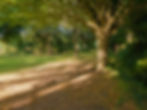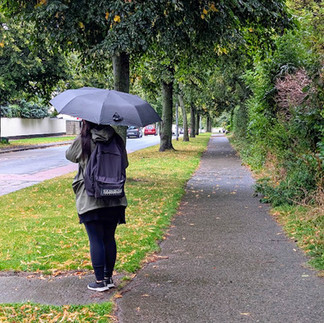Why I Believe it’s Worth Having an Everyday Carry Camera
- WildWillowWays
- Sep 14
- 8 min read

In a recent post I explained why I feel that I need to adopt a daily photography approach. It's something that I have been considering for some time, but a few things have helped me make up my mind.
Recently I made a train journey to meet some old friends. I was travelling to a location that was relatively new to me, and I thought there may be some photo opportunities. However, since my trip involved some walking I simply carried what I needed – wallet, keys, phone and one or two other bits and pieces that live in my bag.
I reckoned that my phone would be perfectly ok to take any photos I needed.
Big mistake!
I took a few pictures but wasn’t happy with them. The whole experience felt rushed and not at all like photography. I didn’t have much interest in looking at them when I returned home, and, unlike those on a camera memory card, they are now buried among photos of a family function and my dog!
I regretted not having a proper camera with me. My photographer’s eye picked out lots of potential images but without a camera I didn’t feel that they were worth pursuing.
This is just one recent occasion when I have realized the potential benefits of having an everyday carry camera, one that’s with me all the time. There have been many other similar occasions.
What are the benefits of an everyday camera?
Many photographers have embraced the idea of the everyday camera, sometimes called an everyday carry (EDC). The approach of having a camera with you all the time, instead of relying on a phone camera, is gaining momentum among photographers on YouTube. The everyday camera idea, and the tangible benefits it brings, were very well outlined in a recent YouTube video from photographer and filmmaker Rick Bebbington.
Rick had been primarily a landscape photographer, photographing amazing landscapes at sunrise and sunset, and visiting iconic locations to do photography. He was able to capture some of the world’s most epic vistas in beautiful light, yet he noticed that by concentrating solely on this type of landscape photography, the number of photographs he was taking was declining. As a result, he began to question his worth as a photographer, saying that he regularly experienced ‘imposter syndrome’.
An unexpected few hours free time on a stopover to Antarctica changed Rick’s mindset and subsequently his approach to photography. He began to embrace the idea of photographing the moments in between, those moments that often go un-noticed but that can offer the simple joy of making pictures.
Rick embraced the idea of the everyday carry camera and now constantly takes his camera wherever he goes. Since he began to photograph ‘the moments in between’ the number of photographs he takes has increased greatly, and he has rediscovered his love for photography.
Check out Rick’s interesting and inspirational video here.
Rick Bebbington is one of the many photographers who are encouraging people to add an everyday carry camera to their photography workflow, and they cite the many benefits of doing so.
· An everyday carry camera gives you numerous opportunities to practise your skills. The final images don’t have to be perfect, or even shown to anyone else, but they allow you to get to know your camera well, to experiment with composition, to observe the type of subjects you are drawn to, and to understand light and how it affects your images. The more often you are out with your camera capturing images, the better you’ll become at photography. Also, the more images you make, the more likely you are to get some you like.
As photographer Gareth Danks puts it, ‘The more you shoot, the more you’ll score’.
· An everyday carry camera gives you the tactile, real photography feeling that many believe is missing from phone camera photography. You hold a camera differently, use physical buttons, and you can adjust your settings in a tangible way to get the effect you want.
· Having a camera always with you encourages you to become an observer of life, always at the ready to capture interesting subjects, quirky scenes, and amazing light. While we may have a phone camera to do this, I believe that there is a different feeling, a different vibe, to having a dedicated camera at hand. It gives you the impetus to be on the alert for potential subjects in a way that a ‘taken for granted’ phone in our pocket doesn’t do.
· An everyday carry camera helps you to become more observant; it helps you to notice little details that you don’t ordinarily notice and to become more adventurous with your subject choices.
· An everyday camera encourages you to experiment and to get more creative, knowing that your photos can be just for you.

Sometimes two of the elements essential for a good photograph - interesting subject and great light - can't be summoned together on demand. They often appear randomly and that is why it is important to have a camera at the ready.




Why not just use your phone?
I have been using my phone as my everyday camera for some time. Whenever I update, I look for the best phone camera option. While it is good for casual snapshots, I have had several issues with having my phone double as a camera for more serious photography.
· It obviously doesn’t give that ‘real camera’ experience, the feel of a camera in my hand, the physical buttons, the satisfying 'click' , which I really do love.
· The photographs are often over-saturated and don’t give that unique ‘out of camera’ look. Additionally, you have very little real control over the final outcome with so much in-phone processing and an increasingly AI driven photography experience.
· My phone has many uses and adding photography on a more frequent, rather than simply casual, basis greatly increases battery usage.
My phone camera will always be my camera of choice for casual photos of family and friends, mainly because most people want to see the photos immediately and share them instantly. It will also be a good backup option on many occasions, but to enhance my photography practice I want to embrace the benefits of a dedicated everyday camera.
My phone camera has often been there when I had no other camera with me and I was glad to be able to get the shot I wanted.
What are the options?
I have researched the many and varied options that might serve as a suitable everyday carry camera. They range from top-of-the-range compact cameras such as the Ricoh GR and Leica series cameras, which come with a premium price tag, to the Sony and Canon slightly lower spec (but not by much!) compacts, to the vast Panasonic range of cameras offering different features for different needs.
There are countless other brands on the market also, some with good image quality, some not so good. If you have certain requirements in mind, such as having a viewfinder, a tilting or touch screen, good battery life, genuinely pocketable, large zoom range, it can be hard to find all in the same camera at a reasonable price but you’ll usually be able to reach a compromise.
If you prefer to go the interchangeable-lens camera route, there are also options available although they may have older technology or be slightly bigger when you attach a lens. This may or may not be a deal breaker for you. Personally, I don’t mind making some compromises to get a camera that I want to come to love as my daily photography companion, so a more 'vintage' camera appeals to me.
As I said, I have done extensive research and what I conclude is that it is a bit of a minefield!!
Having said that, I have shortlisted to a few options and will soon opt for the best compromise in features, price and pocketability to suit my needs.
Do you need an everyday carry camera?
Not everyone will need, want or use an everyday camera. Many will be content to use their larger camera and lenses, do photography at designated times and opt for bigger sensor image quality while being happy to use their smartphone camera to cover those in-between moments.
But if you have become dis-satisfied with your phone camera and you would like to take many more photographs than you are currently taking, an everyday carry may be for you.
An everyday carry will be of benefit if:
You want a ‘real camera’ experience rather than that given by your smartphone.
You want to document life as it happens, daily, capturing even tiny details that reveal themselves to you.
You enjoy your dedicated photo shoots with your ‘big’ camera, but you want more – more time with your camera, more practise, more images, more fun with your photography.
You want to find those images that you currently miss; the little details, the things that go unnoticed, the beauty in everyday things just waiting to be revealed.
Postscript
The Verdict
After many hours of research, deliberating, changing my mind and being unsure about ever finding the everyday camera that would tick all my boxes, I eventually made my decision.
I rejected the Ricoh and Leica cameras purely on the grounds of cost, as they would both be great cameras to have.
Some of the cameras I looked at were very small and compact and they weren't exactly a substitute for my current set-up. My fear was that I wouldn't see much improvement over my phone camera.
I was veering towards the Lumix L15/10 as it seemed to suit my needs, but I couldn't find one for sale, either new or used.
I finally settled on the Panasonic Lumix GX7 and the Panasonic 20mm f1.7 pancake lens, both bought used from MPB. The GX7 is an old camera, but for an everyday camera it's the images and the fun of taking pictures that I want to concentrate on, so I don't need or want the latest technology. It is light, it gets good reviews from those who use it, and although no-one claims that it is a perfect camera it sounds like it could be an interesting and fun camera to get to know and use daily.
The 20mm f1.7 lens may not be perfect either, but it has character and I like that. Jimmy West says it is, 'light, simple and a little bit soulful'. I like the sound of that. I also like taking advice from those who give a balanced view, stating the pros and cons of the item, and I feel that I can live with this lens's limited flaws. You can watch Jimmy West's assessment of the lens here https://youtu.be/cUhNMQtXbKU?si=CUXf4h5zc2PP74rN
Apart from the small size and unique character of the 20mm f1.7 lens, part of the reasoning for my choice was that 20mm on micro four thirds is equivalent to 40mm full frame, a standard view to cope with all types of photography, yet I won’t be confined to that if I want to use my 14-42mm pancake, my 25mm f1.8, or any other focal length in the M43 system. Yes, a compact camera might have given me a good zoom option, but I think that since I already have some micro four thirds’ lenses this might be the most versatile and budget friendly decision.
Here are some starter pictures taken in my local park with my new camera and lens. I'm still in learner mode!











As I get to know the camera I will be able to make adjustments to settings but for now I'm in experimentation mode and just enjoying the everyday camera experience.














